Infra-red Photography
Infrared film captures light in the part of the spectrum which we can't see with the naked eye. Infrared photography is available in two forms, black and white negative and colour, examples of which can be seen below.
In infrared photography a red style filter is used, this lets infrared light pass through to the camera, but blocks all or most of the visible light spectrum. The film used is sensitive to near-infrared light, this is separate from far-infrared, which is usually referred to as thermal imaging.
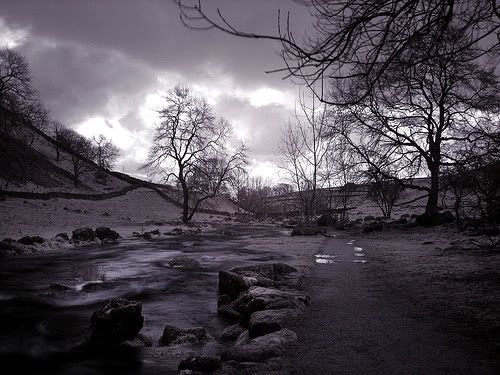 The river Aire towards Malham from the foot of Malham Cove, in the Yorkshire Dales.
The river Aire towards Malham from the foot of Malham Cove, in the Yorkshire Dales. A church taken in infra red.
A church taken in infra red.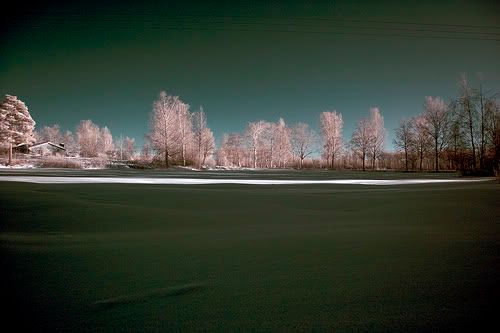 This snowy scene shows the wood effect.
This snowy scene shows the wood effect.Infrared photography creates photographs with very dark skies and atmospheric haze, shadows and dull areas appear darker and more atmospheric, while lighter areas seem to take on an ethereal glow. Interesting artifacts can be produced leading to an image with a dreamlike quality. The effect, known as the Wood Effect(named after Robert Wood who published the first infrared photographs in 1910) is caused by light reflecting back from foliage.
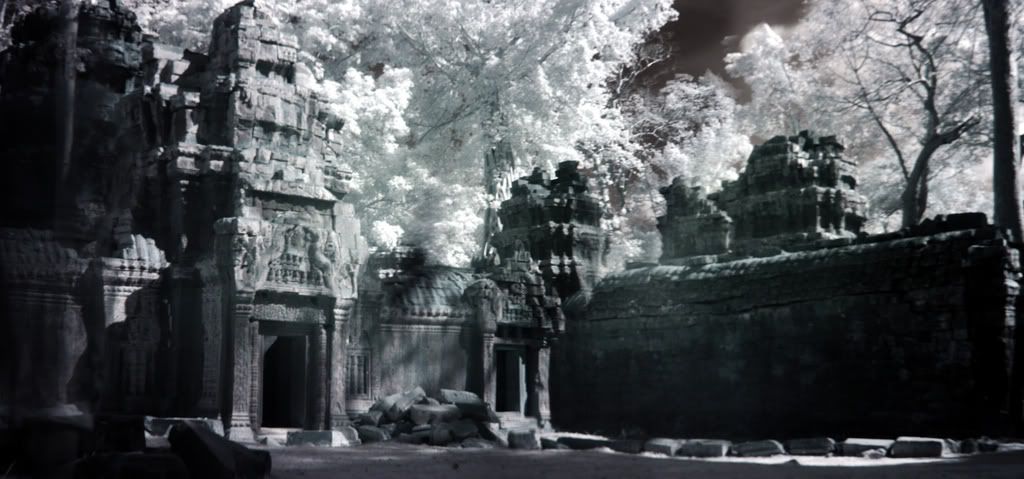 Anka Watt
Anka Watt 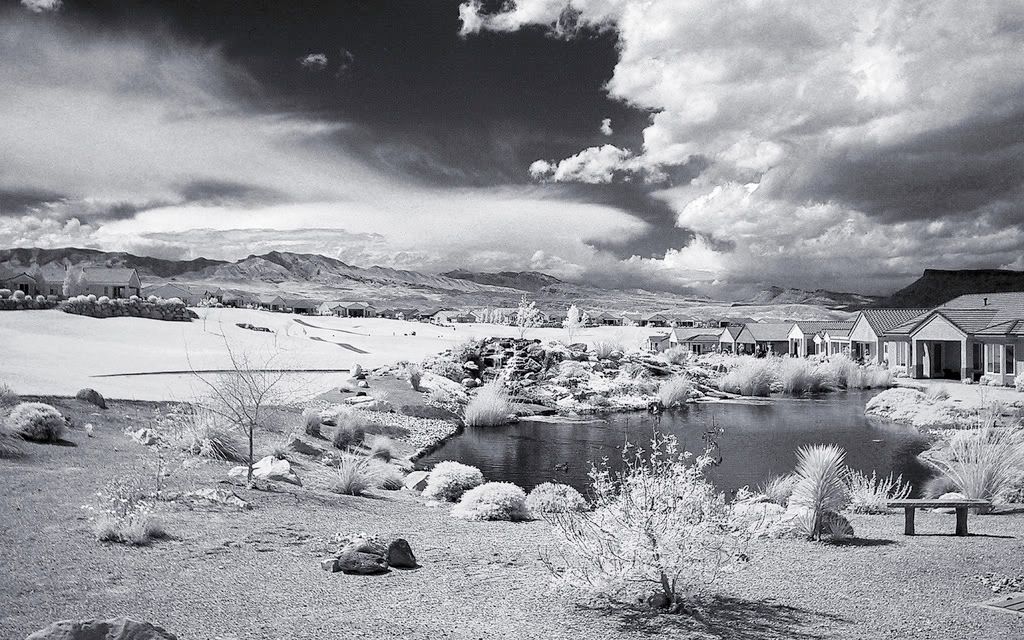 This photograph of SunRiver, St George, Utah shows the contrasting shades that can be achieved.
This photograph of SunRiver, St George, Utah shows the contrasting shades that can be achieved.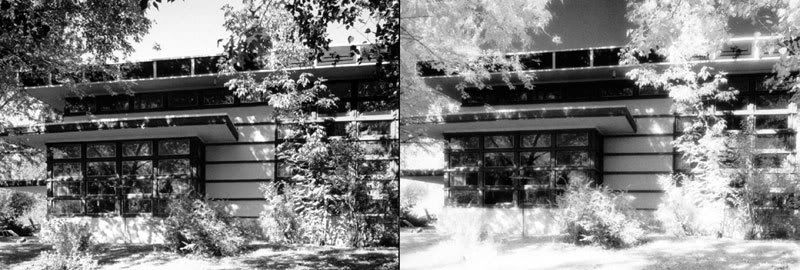 A side by side comparison shot taken of the Frank Lloyd wright's Rudin house shows the more extreme contrasts that can be achieved with infra red photography. Compared the sharper image of the black and white photograph on the left with the infra red picture on the right.
A side by side comparison shot taken of the Frank Lloyd wright's Rudin house shows the more extreme contrasts that can be achieved with infra red photography. Compared the sharper image of the black and white photograph on the left with the infra red picture on the right.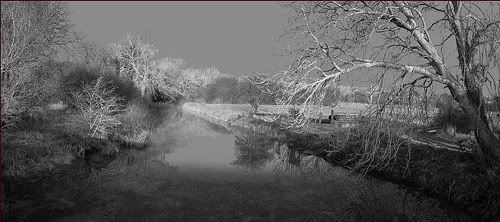 Infra red on black and white film makes for good landscape pictures, as this picture of Bere Mill shows.
Infra red on black and white film makes for good landscape pictures, as this picture of Bere Mill shows. Recommended links about infra red photography.
More information on infra red photography can be found on wikipedia
nikongear.com forums offers some good advice and discussions on the subject.
The Spearmint Guide To Infra Red Photography give a good introduction to the subject as well as explaining some of the science behind it in good clear terms.
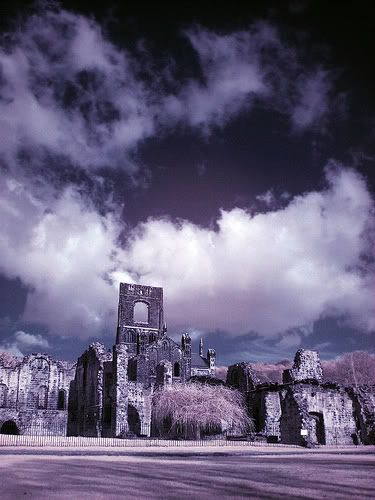

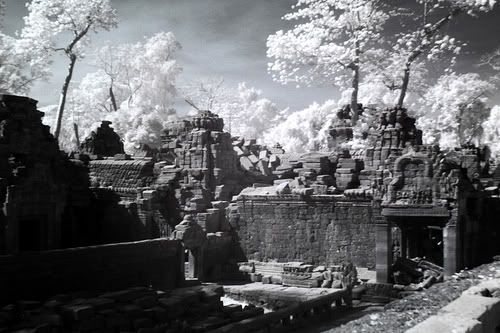




No comments:
Post a Comment